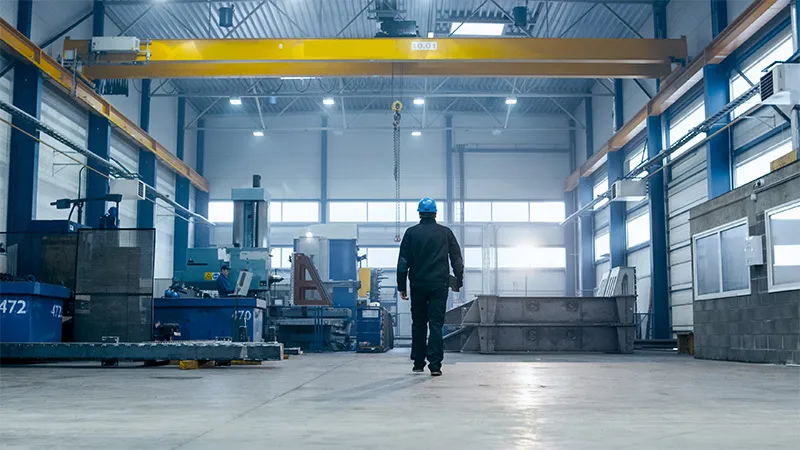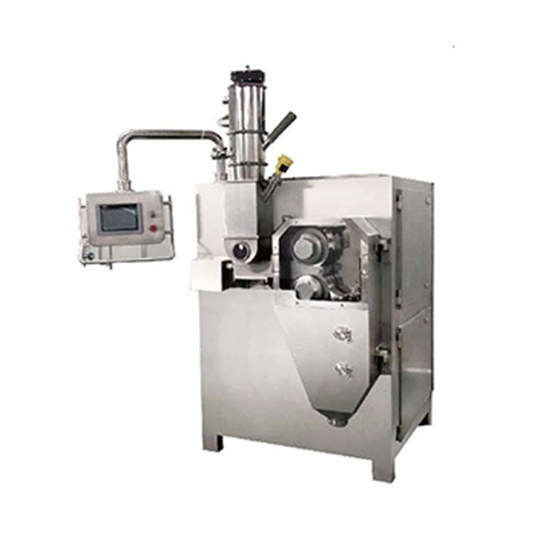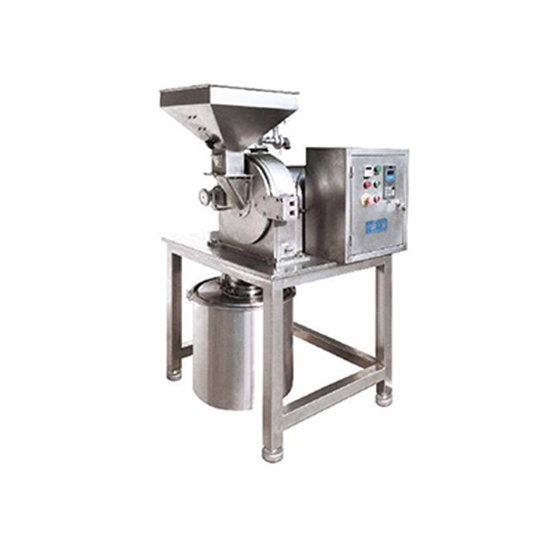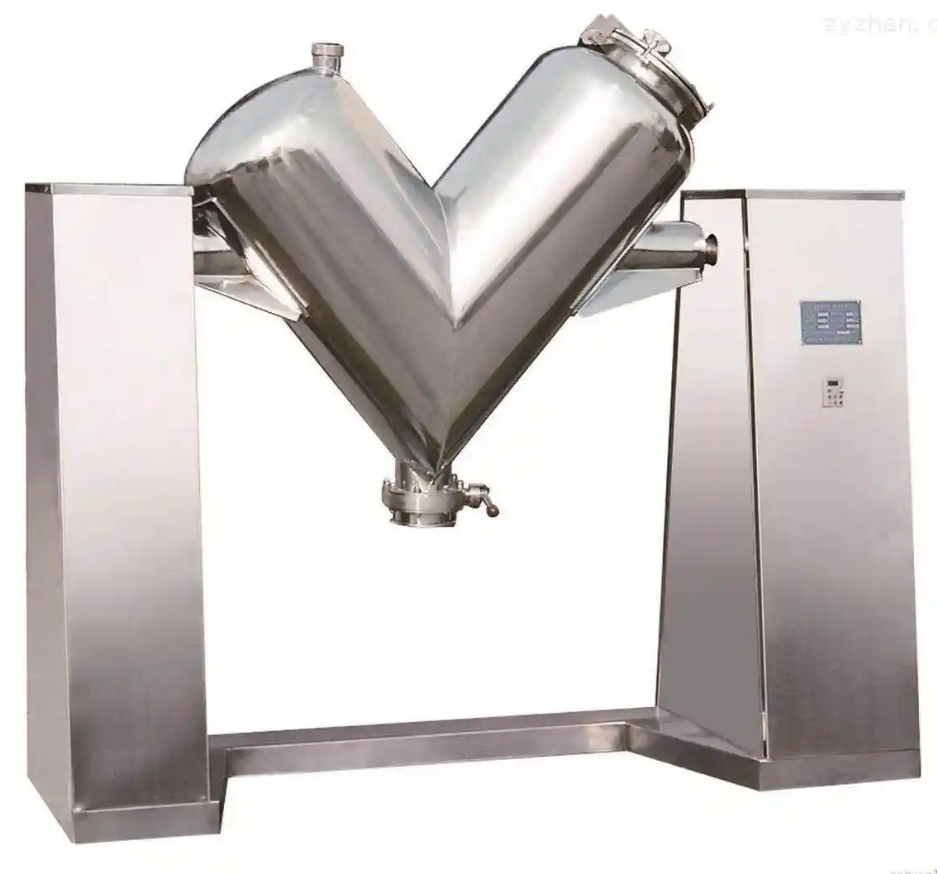NEWS
Swing Granulation Systems: A Critical Component in Manufacturing
Jul 14,2025
Swing Granulation Systems: A Critical Component in Manufacturing
Table of Contents
- 1. Introduction to Swing Granulation Systems
- 2. Importance of Swing Granulation in Manufacturing
- 3. How Swing Granulation Systems Work
- 4. Types of Swing Granulation Systems
- 5. Advantages of Using Swing Granulation Systems
- 6. Applications of Swing Granulation Systems
- 7. Criteria for Selecting a Swing Granulation System
- 8. Future Trends in Swing Granulation Technology
- 9. Conclusion
1. Introduction to Swing Granulation Systems
In the realm of manufacturing, efficiency and quality are non-negotiable. Swing Granulation Systems play a vital role in achieving these goals, serving as essential equipment for the pharmaceutical, food, and chemical industries. These systems are specifically designed to create granules of uniform size, enhancing the flowability and compressibility of powders, which are critical in formulating tablets and other products.
The need for effective granulation techniques has surged due to the growing demand for high-quality products in various sectors. As manufacturers strive to meet stringent regulatory standards and consumer expectations, Swing Granulation Systems have emerged as a reliable solution to optimize production processes.
2. Importance of Swing Granulation in Manufacturing
Swing Granulation is crucial for several reasons. First and foremost, it significantly improves the physical properties of powders. By transforming fine particles into larger granules, it enhances flowability, making it easier to handle during subsequent processing stages. Furthermore, uniform granule size is essential for ensuring consistent dosage in pharmaceuticals, thereby improving the safety and efficacy of medications.
Additionally, Swing Granulation Systems contribute to the reduction of material waste. By efficiently utilizing raw materials and minimizing fines, manufacturers can lower their production costs while maintaining quality standards. This is particularly vital in industries where raw material costs fluctuate or where sustainability is a growing concern.
3. How Swing Granulation Systems Work
Swing Granulation Systems operate on the principle of wet granulation, where a liquid binder is combined with powdered materials to form granules. The process typically involves several key stages:
1. **Mixing**: The first step involves the thorough mixing of the dry powder with a binder solution. This ensures that the binding agent evenly coats the powder particles.
2. **Granulation**: The mixture is then subjected to a swing motion, which facilitates the agglomeration of particles. The kinetic energy generated during this motion encourages the formation of larger granules as smaller particles stick together.
3. **Drying**: Once granulation is complete, the wet granules must be dried to remove excess moisture, achieving the desired moisture content for stability and shelf-life.
4. **Sizing**: The final step involves sizing the granules to ensure uniformity. This may include sieving to separate oversized or undersized particles, ensuring that the final product meets specific quality standards.
4. Types of Swing Granulation Systems
Understanding the different types of Swing Granulation Systems can help manufacturers choose the right equipment for their specific needs.
4.1 Batch Swing Granulation Systems
Batch systems are designed to process a specific quantity of material at a time. This type is ideal for manufacturers who require flexibility in production runs and need to switch between different formulations frequently. Batch systems offer precise control over the granulation process, making them suitable for high-quality products with stringent specifications.
4.2 Continuous Swing Granulation Systems
Continuous systems, on the other hand, are designed for high-volume production. These systems allow for a continuous flow of materials and are often used in large-scale manufacturing operations. They provide consistent granule sizes and reduce processing time, making them a cost-effective solution for high-demand products.
5. Advantages of Using Swing Granulation Systems
Swing Granulation Systems offer numerous advantages that make them invaluable in manufacturing:
- **Enhanced Product Quality**: By producing uniform granules, these systems improve the quality of the final product, ensuring consistency in dosage and performance.
- **Increased Efficiency**: The ability to process large batches or continuous flow significantly reduces production time and labor costs.
- **Flexibility**: Manufacturers can easily adjust the granulation parameters to accommodate different formulations, making these systems versatile for various applications.
- **Reduced Waste**: Effective granulation minimizes material loss and maximizes yield, contributing to lower production costs and less environmental impact.
- **Improved Handling**: Granules produced by Swing Granulation Systems exhibit better flowability and compressibility, making them easier to handle during packaging and storage.
6. Applications of Swing Granulation Systems
Swing Granulation Systems find applications across multiple industries, including:
- **Pharmaceuticals**: Used to produce granules for tablets and capsules, ensuring accurate dosing and improved stability.
- **Food Industry**: Granulation is essential for producing consistent food ingredients, such as seasonings and flavorings.
- **Chemicals**: These systems help in the production of granulated chemicals, which are easier to transport and handle than powders.
- **Cosmetics**: In the cosmetic industry, Swing Granulation Systems are employed to create uniform granules for various formulations, enhancing product performance.
7. Criteria for Selecting a Swing Granulation System
Choosing the right Swing Granulation System requires careful consideration of several factors:
- **Production Volume**: Assessing the required output helps determine whether a batch or continuous system is more suitable.
- **Material Properties**: Understanding the characteristics of the materials to be processed is crucial for optimizing granulation parameters.
- **Flexibility Requirements**: Consider how often product formulations change and select a system that can easily accommodate those changes.
- **Cost Considerations**: Evaluate both initial investment and operational costs to ensure the chosen system aligns with budget constraints.
- **Maintenance and Support**: Opt for systems from reputable manufacturers that provide comprehensive support and maintenance services.
8. Future Trends in Swing Granulation Technology
As the manufacturing landscape evolves, so too does the technology behind Swing Granulation Systems. Some emerging trends include:
- **Automation**: Increasing automation in Swing Granulation Systems enhances precision and reduces human error in the granulation process.
- **Real-Time Monitoring**: Advanced sensors and IoT integration allow for real-time monitoring of granulation parameters, facilitating immediate adjustments to optimize quality.
- **Sustainability**: The focus on eco-friendly practices is leading to the development of systems that utilize less energy and produce less waste.
- **Customization**: Manufacturers are seeking more customizable solutions that cater to specific production needs, leading to innovations in design and functionality.
9. Conclusion
Swing Granulation Systems represent a critical component in modern manufacturing processes, offering substantial benefits in efficiency, product quality, and operational flexibility. By understanding their functionality, advantages, and applications across various industries, manufacturers can make informed decisions about integrating these systems into their production lines. As technology continues to advance, the role of Swing Granulation Systems will only grow, solidifying their importance in the quest for high-quality manufacturing. Embracing these innovations will ensure that businesses remain competitive in an ever-evolving marketplace.
FAQs
1. What are Swing Granulation Systems?
Swing Granulation Systems are industrial equipment used to form granules from powdered materials through a wet granulation process, enhancing flowability and compressibility.
2. How do Swing Granulation Systems improve product quality?
By producing uniform granules, these systems ensure consistent dosing and performance, which is crucial in applications like pharmaceuticals and food production.
3. What types of materials can be processed using Swing Granulation Systems?
These systems are versatile and can handle a wide range of materials, including pharmaceutical powders, food ingredients, and chemical compounds.
4. What are the key advantages of using Swing Granulation Systems over other granulation methods?
Swing Granulation Systems offer enhanced product quality, increased efficiency, reduced waste, and improved handling of granules.
5. How can manufacturers choose the right Swing Granulation System for their needs?
Manufacturers should consider factors such as production volume, material properties, flexibility requirements, cost considerations, and available support services when selecting a system.
More News










